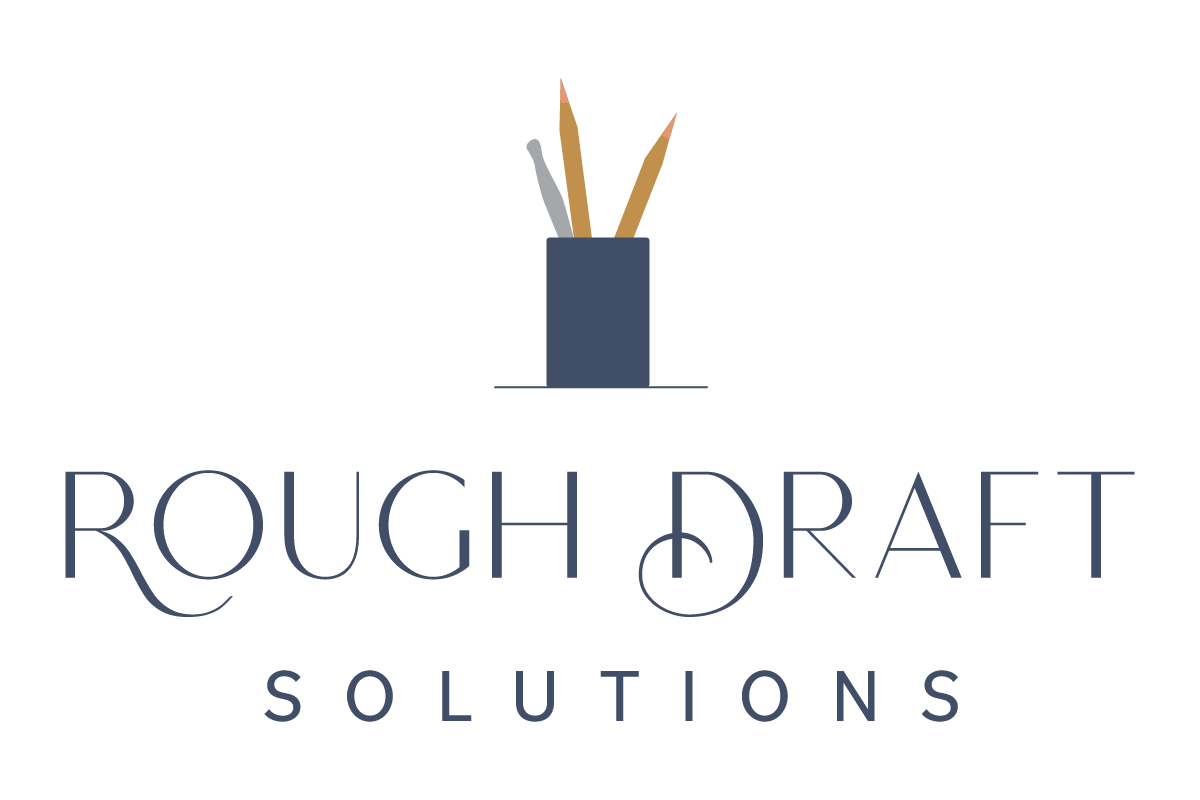Your website is the face of your company.
You may have heard that before, but it’s worth repeating. Your website is often the first place people go when they want to learn about what you do and how you can help them. And while it’s important for your website to look appealing, the words on each page will determine if it works effectively for your business or not.
Website design vs website content
The truth is, website content is often an afterthought. When building a website for your business, your first thought was probably about how you wanted it to look. Don’t get me wrong! A well-designed website is imperative, but your content is what’s going to cause people to take action.
At Rough Draft Solutions, we partner with web designers on a regular basis. Their biggest complaint is that their customers come to them, ask for a website, and expect the designer to come up with the words.
Designers (most of the time) are not wordsmiths. They don’t specialize in helping you explain your products or differentiating your business from your competition. They are there to build and design a site that is inviting to look at and functions with ease.
Designers expect you (the client) to have the content developed. And frankly, they don’t care whether you write it or if you hire a copywriter to do it. They just need the content. The most common reason there is a delay in a new website launch is a lack of content.
When building a new website or having your website refreshed, we urge you to not overlook your content. Here are a few reasons why your website content needs to be a priority.
1. Content defines your value and inspires readers to take action
When you pair professional web design and quality content, you can easily guide your potential customers where to go on your site. But all too often, we settle for mediocre writing that just provides a laundry list of services.
Your website content sets the tone for your reader’s experience. This is your reader’s first impression of you, so make sure it is a good one. How quickly can you give your potential customers the information they are looking for? Is it absolutely clear what you do and how you provide value to your customers? Within 5-10 seconds of visiting your website, they should have a good idea of what you do. Yes, seconds. Not minutes.
When thinking about the words on your website, be picky and remain focused. Use powerful language. Have a goal in mind for every single page, and make your message compelling, clear, and concise. Be respectful of their time, and make the experience easy and enjoyable.
Your content also needs to provide a convincing argument for what you can do for customers. Use your content as an opportunity to detail what products or services you can provide. How is your company better than other companies that offer the same services? Why should potential customers choose to work with you?
In today’s content-heavy world, capturing people’s attention can be a challenge. But take heart, quality design, and intentional word choice can go a long way.
Here are a few quick tips to help keep your content on the right track:
Use compelling and clear headlines to appeal to your audience.
Use subheadings throughout each page to break up the content and draw readers in. Make your content easy to skim!
Break up big paragraphs into several shorter sections. Don’t use long sentences.
Include a call to action button at the bottom of each page. Guide your reader where to go next and tell them what you want them to do!
Remember, before you capture anyone’s interest, they must first clearly and easily understand what you do!
2. Design sets a visual style, but content tells your story
A pretty homepage will definitely draw customers in at first, but if you can’t capture their interest beyond that, then your website isn’t working.
For small businesses, one of your best assets is your ability to connect and work closely with your customers. Your website should help your readers get to know who you are, what you do, and whether you are a good fit for their needs. This is your chance to win them over!
Use your content to highlight what makes you different from other companies. Personify your business by telling your story of how you got where you are. By sharing this information in a way that relates to your customers, they are able to see more of you than just your products/services. It’s so much more fun to read a real story than a list of accomplishments or services. It is true, people do business with people, not businesses. So don’t limit yourself by hiding who you are!
Through your content, show potential customers that you are a reliable partner that they will come to know, like, and trust. Convince them that you are someone they can rely on to handle their needs.
If you have a team, introduce them to your audience. Showcase why you are best suited to help your clients and what they can expect when they work with you. By painting the picture, they don’t have to wonder what it would be like to work with you.
3. Keywords and SEO draw more viewers to your site
Not only are the words you write important to encourage customers to buy your products or use your services, but they also play a big part in positioning your business to be found online.
This is where keywords and search engine optimization (SEO) come in handy. Your content can be strategically written to include keywords so that your content reads beautifully while working well with Google. By planning ahead, relevant keywords can strategically be incorporated into your content in a way that makes it easy to find online and informative for your customers.
The truth is, people have to be able to find your website before they can even appreciate its beautiful design or interesting content! Choosing and implementing smart keywords may take a little extra time, but it is well worth it.
There is an abundance of free resources available to help you determine the keywords to use for your website content. We typically use the Google Adwords Keyword Planner. This resource helps you to narrow down the keywords that are used frequently within your industry. You can also search keywords to see how they are ranked on the web.
As we mentioned before, the title of each page on your website, as well as your blog post titles, play a big role in drawing people in and allowing them to find you online. Try using CoSchedule’s Headline Analyzer to create stronger headlines. Simply type in your headline, and the system will dissect and analyze it for you!
A few keyword tips to get you started:
Use keywords that are popular, but not too competitive in your market.
Consider using keyword phrases opposed to single words.
Always write with your audience in mind. Answer their questions and solve their problems.
Don’t overuse keywords! You want them to feel natural and to appear only a few times throughout each page of content.
We are all in favor of beautifully designed websites. But we know that they work better when they are paired with compelling and informative content.
Don’t let your website content be an afterthought. Businesses who don’t strategically plan and intentionally develop their website content miss out on potential clients. Make sure your website content is engaging, provides relevant information, and gives potential customers a reason to want to work with you!
What is your biggest struggle when it comes to writing your website content? Comment below!











